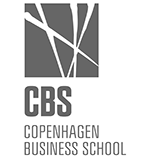2
Materials in Fashion
download
teacher's notes
> Grade: 7th to 9th
> Subjects
Material Science
Sustainability
c. The research Team
A
Natural Fibres
THEORY
Plant Fibres - Cotton
Read about cotton and match the titles to the paragraphs:
a) The environmental impact of cotton
b) The historical distribution of cotton and the largest modern producers
c) How cotton is produced
d) The popularity and properties of cotton.
1. Section heading: __________________
Cotton accounts for some 34% of the world's total demand for fibre. One reason for the great popularity of cotton is that it’s such a versatile fibre: it can be light and soft or heavy and rough, and it can be warm or cool depending on the treatment the fabric receives. Cotton is absorbent and easy to wash and dye. This versatility means cotton can be used to make a wide range of products, including T-shirts, towels, jeans, underwear, sheets, sofas, tents, even coffee filters.

2. Section heading: __________________
Cotton comes from the flower of the cotton plant. Cotton grows best in warm and wet climates found in tropical and subtropical regions, including the southern United States, India, China, Egypt and Brazil. The fruits of the cotton plant, called bolls, contain fibres. When the bolls ripen, they split open and the fibres blow away. But in the cotton fields the bolls are picked before they split. Once the bolls have been harvested, the fibres are extracted.

3. Section heading: __________________
Cotton plants need a lot of water to grow. To produce enough cotton to make a single T-shirt and a pair of jeans requires thousands of litres of water. Cotton plants are also vulnerable to many pests and diseases. The production of cotton uses 24% of all the insecticides produced in the world (WWF). Cotton production is the main source of pollution in some countries and a major source of pollution worldwide.
4. Section heading: __________________
Cotton was already present in all of the major continental regions at the start of human civilization. Archaeologists have found pieces of cotton cloth that are 6,000 years old in what is today Pakistan and 7,000-year-old pieces in Mexico. The three biggest cotton producers today are China, India and the US. Much of the cotton produced today has been genetically modified.
mini research task

TASK 1 - Find out about the use of genetic modification in the use of cotton.
TASK 2 - Find out about the effects of cotton on the Aral Sea.
TASK 3 - Gather some statistics on the use of chemicals in the cotton industry.
TASK 4 - Find out about any improvements in the sustainability of cotton.
Animal Fibres - Wool
Wool is a remarkable fibre, with numerous qualities that are hardly replicable. It also has a very special place in our culture as it was the first fibre that man ever used to dress.
Wool is an organic material composed of keratin, an animal protein that is also found in our hair and nails. Wool has many unique properties. For example, it provides great insulation for cold and warm weather. No matter if you’re hot in summer or cold in winter, it can maintain your body temperature. Even people living in the desert, like the Bedouins in Arabia and Tuaregs in Sahara, use wool for insulation.
Wool fibres have a crimp. This is a natural wave that allows air to be trapped within the structure, giving wool its natural insulating quality. Another characteristic is that the exterior of the wool fibre is hydrophobic and tends to repel water, which means it's a little bit waterproof; while the interior of the fibre is hydroscopic and attracts water, which means it can absorb sweat, so you avoid the feeling of being wet. This makes it perfect for high-performance sportswear.
Even though wool only accounts for 2% of the worldwide fabric demand these days, it had a very significant role in history. Wool was an important commodity that drove the economy of Europe for centuries. The Romans first had the idea of breeding different kinds of sheep to obtain the best quality wool. Over time, a lot of countries in Northern Europe developed sophisticated techniques for creating very delicate and soft fabrics made of wool. By the medieval times, it was a major economic engine in Europe.

Here you can find an example of how wool is used for high performance clothing
THEORY
Debate
TEAM 1 - Defend wool as a sustainable fibre.
TEAM 2 - Defend wool as an unsustainable fibre.
Imagine you are working in the research department of a big fashion brand. Your job consists of researching one of these topics and then presenting it to the brand's board of directors. Choose the topic you think is the future of fashion. Team up with some classmates and create a proper research team.
C
The Research Team

Synthetic Fibres - Polyester
Polyester is the most common man-made fibre in the world. It is extremely strong and very durable, but very cheap to produce. It is also hydrophobic (repels water) and it dries quickly.
Polyester is a synthetic fibre made from petroleum. When acid and alcohol from petroleum are reacted in a vacuum at high temperatures it results in condensation polymerisation. Once the polymerisation has occurred, the material is poured onto a casting trough in the form of a ribbon. Once cool, the ribbon hardens and is cut into chips. After that, the chips are melted into a viscous liquid that will be extruded to form a filament that will be the polyester thread.
Polyester was first patented in 1941, by two British chemists, and from the 1950s to the 1970s polyester use expanded rapidly. It was a cheap, low maintenance fibre that could be used for garments, home wear and plastic structures. However, polyester is not biodegradable and it’s produced from a non-renewable source. This caused problems with the rise of environmental concerns, promoted by the hippie movement in the 1970s, and synthetic fibres lost their position in the market to natural fibres. Only recently has polyester become more popular again. This is thanks to the new polyester fibres created for technical sportswear, and the combination of polyester fibres with state-of-the-art nanotechnology. It is also the only fibre that can be recycled into the same quality yarn over and over again.


Recycled polyester dress from H&M Conscious collection.
Copyright Hennes&Mauritz
Real Madrid Football Club official T-shirt made of 100% polyester fabric. Copyright Real Madrid
Man-made fibres
THEORY





What is the difference between natural fibres and man-made fibres?
What is the difference between synthetic fibres and artificial fibres?
pre reading questions and predictions

Artificial Fibres - Viscose
Viscose, also called rayon, comes from the fibres of wood. Once the wood is broken down, the chips of wood undergo a chemical process to become a viscous substance (hence the name viscose), in the same way that paper is produced. This substance is called pulp. This viscous material will become a thread, just like the way polyester is made.
Viscose is absorbent and has a smooth touch, but lacks insulation properties. The fibre and the yarn are very easy to dye, resulting in bright colours that make perfect alternatives to silk. Viscose is not a very strong fibre and it requires careful washing.
Viscose was first produced industrially in the USA during the 1910s. Before that, and as early as the 1850s, lots of researchers had tried different methods to produce a cheap cellulosic fibre that could compete with natural silk, as silk was extremely expensive to mass produce. Unfortunately, today’s production of viscose has increased some environmental problems, particularly the use of numerous chemicals that transform the pulp into fibre and then get released into the atmosphere and water supplies. Scientific attention is now turning to a new generation of renewable and eco-friendly alternatives, such as lyocell.
THEORY

TEAM 1 - Defend polyester as a sustainable fibre.
TEAM 2 - Defend polyester as an unsustainable fibre.
TEAM 3 - Defend Nylon as a sustainable fibre.
TEAM 4 - Defend Nylon as an unsustainable fibre.
Good luck and may the best team win!
Debate


Now you've learned about Natural Fibres and Man-made Fibres!
GO to:
Introduction to textiles
GO to:
Chemistry activity
POWERED BY















